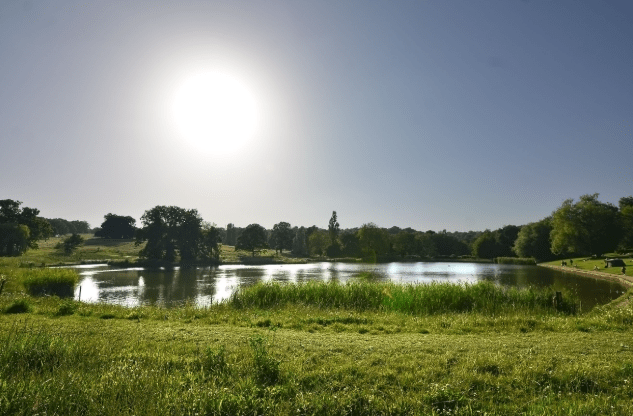Levels of harmful bacteria in Hampstead Heath’s popular swimming ponds have surged to concerning levels, according to new data, raising fresh questions over the safety of these cherished wild swimming locations.
The spotlight has fallen on bacteria levels in Hampstead Heath ponds after a report revealed an extraordinary rise in faecal indicator bacteria over the past year.
Hampstead Heath Ponds See Alarming Bacteria Surge
New analysis from the Bathing Mobility Advisory Service, released by the Environment Agency, revealed that intestinal enterococci (IE) counts – a key indicator of faecal contamination – soared in several London ponds.
- At Kenwood Ladies’ Pond, IE levels shot up from just 8 in 2023 to 230 in 2024 — a staggering 2,875% increase. This figure has since dropped to 10 in 2025.
- The Mixed Pond saw counts rise from 73 to 230 in 2024 before declining to 18 this year.
- The Men’s Pond increased from 27 in 2023 to 73 in 2024, then fell to 18.
- At Hyde Park’s Serpentine Lido, IE levels jumped from 27 in 2023 to 230 in 2024 before falling back to 27.
These spikes in bacteria levels in Hampstead Heath ponds have prompted concern among swimmers and health experts alike.
The findings also revealed similar alarming shifts in Escherichia coli (E. coli), another bacterium associated with faecal pollution and potential illness:
- Serpentine Lido topped the list again, with E. coli counts surging from 45 in 2023 to 580 in 2024, before falling back to 45.
- Mixed Pond levels rose from 100 to 310, then dropped to 45.
- Men’s Pond figures increased to 91 in 2024 and now stand at 185.
- Kenwood Ladies’ Pond, however, saw a welcome decline: from 350 in 2023 to 230 in 2024, and then down to just 18.
These figures point to significant year-on-year variation in bacteria levels in Hampstead Heath ponds and other bathing spots.
Expert Warnings Over Health Risks
Professor Davey Jones of Bangor University issued a clear warning: “These pathogens are one of the biggest threats to human health.”
With such dramatic changes in water quality, swimmers are being urged to stay informed and exercise caution, especially during periods of high rainfall or warmer weather, both of which can influence bacterial spikes.
Despite the sharp increases in bacteria levels in Hampstead Heath ponds, the City of London Corporation (CoLC), which manages the Heath, has downplayed the findings.
In a statement, a spokesperson said the figures are “misleading,” noting that water quality is subject to a range of environmental influences such as temperature and rainfall.
They stressed that occasional fluctuations in bacteria are “not unusual” and highlighted the lack of illness reports from swimmers.
“We are proud that Mixed Pond’s water quality has been classified as ‘excellent’ for several years by the Environment Agency. We maintain the highest standards for our swimmers and take action if required, based on the latest credible data and public health advice,” said a CoLC representative.
While the data shows a return to safer levels in 2025, the unprecedented spike in bacteria levels in Hampstead Heath ponds during 2024 is likely to fuel ongoing discussions about water safety, management practices, and environmental protections in urban swimming areas.
With outdoor swimming continuing to grow in popularity, particularly in the capital, the importance of monitoring bacteria in these ponds has never been greater.






